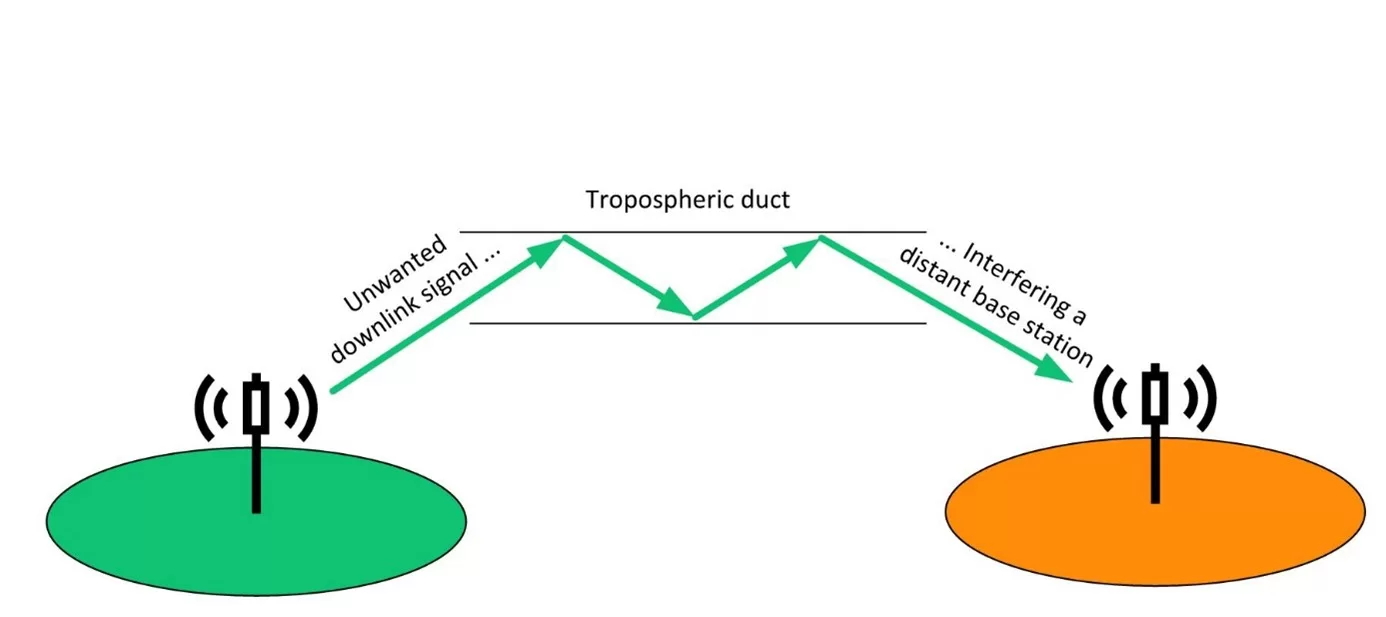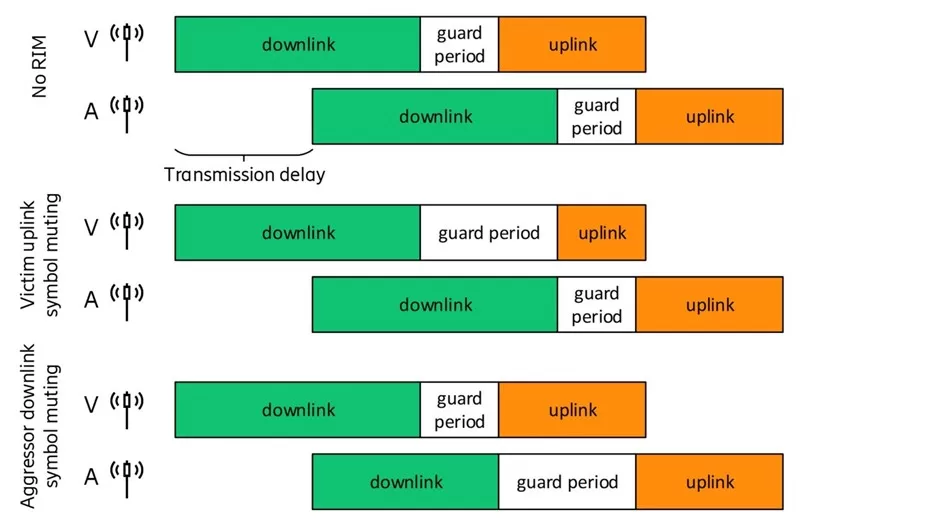Introduction
Narrowband Internet of Things (NB-IoT) has become a cornerstone in the IoT ecosystem, offering benefits such as low power consumption, extended coverage, and support for a large number of devices. With the evolution of this technology, the 3GPP Release 16 introduced significant enhancements at the Radio Link Control (RLC) layer, including Remote Interference Management (RIM) and Cross-Link Interference (CLI) Management.
These advancements are designed to mitigate interference, a common challenge in wireless communication systems that can degrade network performance. This is particularly crucial in NB-IoT networks, where devices often operate in challenging environments and need to maintain reliable connectivity.
In this article, we will delve into these RLC layer enhancements, exploring their workings, benefits, and implications for the performance and efficiency of NB-IoT networks.
Understanding Interference in NB-IoT
Interference is a common challenge in wireless communication systems, where signals from different sources can overlap and disrupt each other. In the context of NB-IoT, remote interference is a particular concern. This type of interference occurs when signals from a distant base station interfere with the reception of signals at another base station.
One of the key factors contributing to remote interference is a phenomenon known as tropospheric ducting where signals from one base station (the ‘aggressor’) can travel long distances and interfere with another base station (the ‘victim’). Under certain atmospheric conditions, the troposphere can form a ‘duct’ that allows radio signals to travel over large distances with minimal loss. This can result in significant interference at distant base stations, as illustrated in the diagram below.

Figure 1: Illustration of tropospheric ducting
The impact of remote interference on NB-IoT networks can be significant. It can degrade the quality of the received signals, leading to poor network performance and reduced reliability. Therefore, effective management of remote interference is crucial for ensuring the robustness and efficiency of NB-IoT networks.
Remote Interference Management (RIM)
Remote Interference Management (RIM) is a key strategy for mitigating the impact of remote interference in NB-IoT networks. It involves a range of techniques designed to protect uplink transmissions from downlink interference, thereby ensuring reliable communication between devices and base stations.
To address this, RIM introduces the concept of adaptive guard periods. A guard period is a short interval of time during which no signals are transmitted. This creates a ‘buffer’ between downlink and uplink transmissions, reducing the likelihood of interference.

Figure 2: Illustration of adaptive guard periods in RIM.
Depending on the level of interference detected, the guard period can be dynamically adjusted to provide adequate protection for the uplink.
However, due to the long propagation delays associated with remote interference, a standard guard period may not be sufficient to fully protect the uplink from interference.
In addition to adaptive guard periods, RIM also involves techniques for interference suppression. For instance, base stations can form receive beams that attenuate the received signal in directions where the interference is strong. This helps to further reduce the impact of remote interference on uplink reception.
While RIM provides a powerful tool for managing remote interference, it also presents certain challenges. For instance, the use of adaptive guard periods can reduce the uplink capacity, while interference suppression techniques require sophisticated signal processing capabilities. In the next section, we will explore another strategy for managing remote interference: Cross-Link Interference (CLI) Management.
Cross-Link Interference (CLI) Management
Cross-Link Interference (CLI) Management is another crucial strategy for mitigating remote interference in NB-IoT networks. CLI occurs when a signal transmitted from one link, or path, in a network interferes with a signal on another link. This can significantly degrade the quality of the received signals and reduce the overall performance of the network.
CLI Management involves a range of techniques designed to minimize the impact of cross-link interference. One such technique is the use of advanced signal processing algorithms to suppress interfering signals. For instance, a base station can use beamforming to focus its signals in specific directions, thereby reducing the likelihood of interference with other links.
Another technique used in CLI Management is resource scheduling. By carefully scheduling the transmission of signals, it is possible to reduce the overlap between signals from different links, thereby minimizing the potential for interference.
RIM Reference Signals
In the context of Remote Interference Management (RIM), reference signals play a crucial role. These signals, transmitted by both the victim (interfered base station) and the aggressor (interfering base station), serve as a means of communication and coordination between the two entities.
For NB-IoT devices, managing remote interference is crucial for maintaining reliable and efficient communication. This is particularly important in Time Division Duplexing (TDD) based deployments, where uplink and downlink transmissions share the same frequency band but are separated in time. In such scenarios, downlink transmissions from one base station can interfere with uplink receptions at another, especially under certain atmospheric conditions that allow signals to travel long distances. This phenomenon, known as remote interference, can significantly degrade the performance of the network.
To manage remote interference, a technique known as Remote Interference Management (RIM) is employed. A key component of RIM is the design of reference signals (RS) that are used to detect and mitigate the impact of remote interference. In the context of NB-IoT, two potential RS designs are commonly considered:
- One OFDM Symbol (1OS) Based RIM-RS: This design builds on the Channel State Information Reference Signals (CSI-RS) of 5G New Radio (NR). The 1OS RIM-RS is transmitted in a single Orthogonal Frequency Division Multiplexing (OFDM) symbol, which allows it to be easily multiplexed with other signals in the network. This design is particularly effective when the number of interfering base stations is large, as it provides smaller overhead and can efficiently detect interference from multiple sources.
- Two OFDM Symbol (2OS) Based RIM-RS: This design builds on the principles of LTE RIM-RS and involves the transmission of the reference signal over two OFDM symbols. While this design requires more overhead than the 1OS RIM-RS, it provides better performance in scenarios where the number of interfering base stations is small.
In an NB-IoT network, the choice between these two RS designs would depend on the specific characteristics of the network, including the number of base stations, the propagation conditions, and the requirements for overhead and performance. By carefully designing and implementing the reference signals for RIM, it is possible to significantly reduce the impact of remote interference, thereby enhancing the performance and reliability of NB-IoT networks.
Future Perspectives
As NB-IoT continues to evolve and mature, the techniques for managing remote interference and cross-link interference will also continue to advance. The ongoing research and development in this area are expected to yield new strategies and technologies that will further enhance the performance and reliability of NB-IoT networks.
Advanced Signal Processing Techniques
Future advancements in signal processing techniques will likely play a key role in improving RIM and CLI Management. For instance, machine learning algorithms could be used to predict the occurrence of remote interference and adjust the guard periods and signal scheduling accordingly. Similarly, advanced beamforming techniques could provide more precise control over the direction of signals, reducing the likelihood of cross-link interference.
Automated Coordination Frameworks
The development of automated coordination frameworks could significantly improve the efficiency and effectiveness of RIM and CLI Management. By automating the process of collecting interference information, making decisions about RIM and CLI Management techniques, and communicating these decisions to the base stations, these frameworks could provide a more dynamic and responsive approach to managing interference.
Standardization Efforts
As RIM and CLI Management become more prevalent in NB-IoT networks, there will likely be increased efforts to standardize these techniques. Standardization could facilitate the interoperability of devices and networks, making it easier for operators to implement RIM and CLI Management across different platforms and technologies.
Cross-Border Coordination
As the reach of NB-IoT networks extends across national borders, there will be a need for cross-border coordination to manage remote interference. This could involve international agreements on the use of guard periods, signal scheduling, and other RIM and CLI Management techniques.
Conclusion
In conclusion, the advent of Remote Interference Management (RIM) and Cross-Link Interference (CLI) Management in NB-IoT networks represents a significant stride in mitigating interference and enhancing network performance. The use of adaptive guard periods, advanced signal processing, and strategic resource scheduling are key elements in this process.
Looking ahead, the integration of automated coordination frameworks, along with standardization efforts, promise further advancements. Despite challenges such as the need for cross-border coordination, the continuous innovation in the IoT field is paving the way for a more connected world, with NB-IoT at its core.
References
- 3GPP RP-191546, “Cross-Link Interference (CLI) / Remote Interference Management (RIM) for NR”
- Elena Peralta et al. “Reference Signal Design for Remote InterferenceManagement in 5G New Radio”, Department of Electrical Engineering, Tampere University, Finland.

